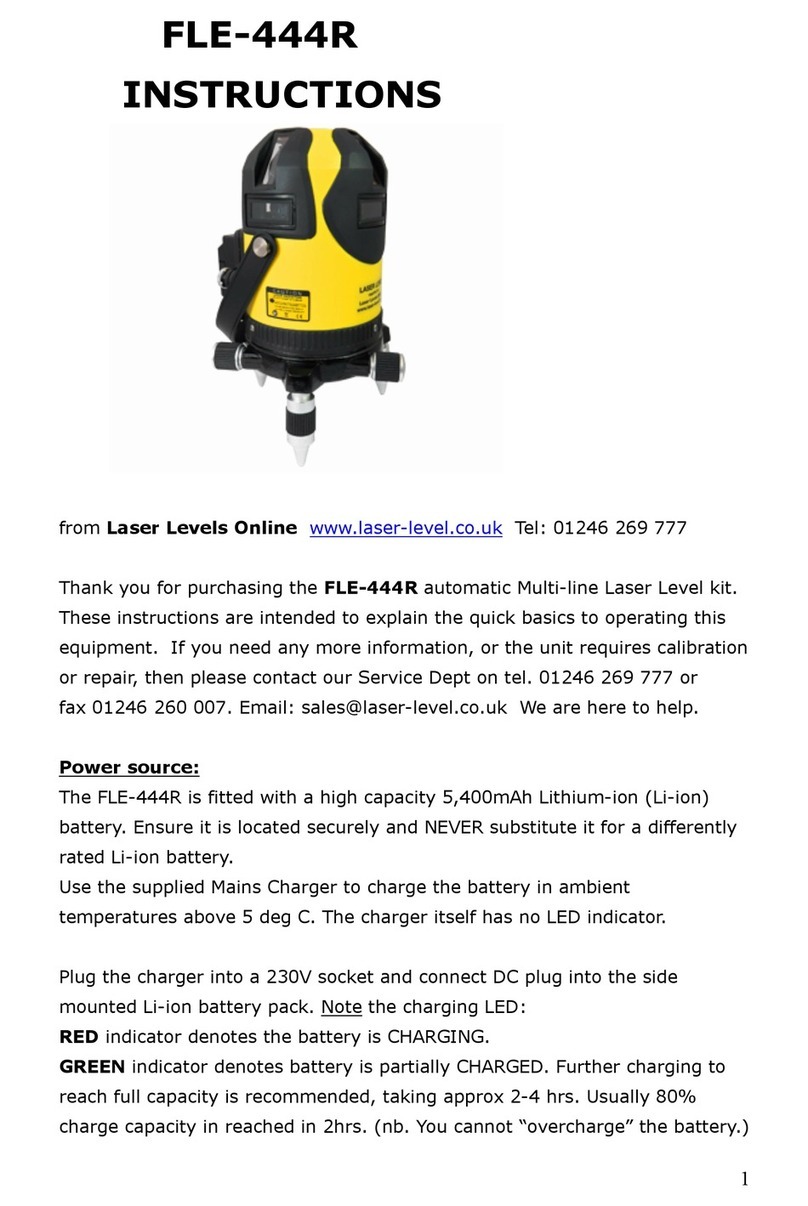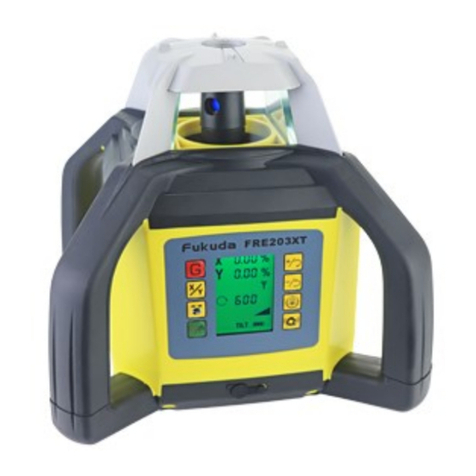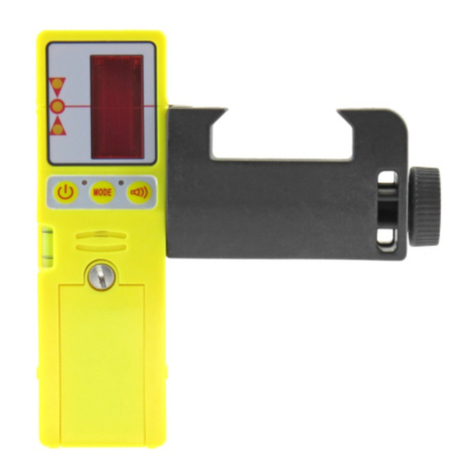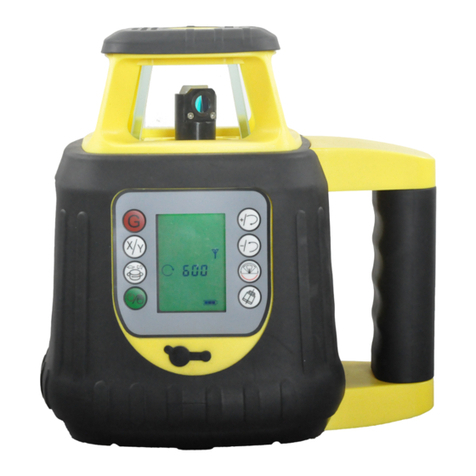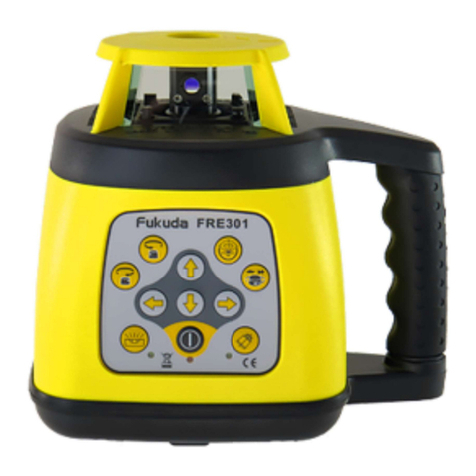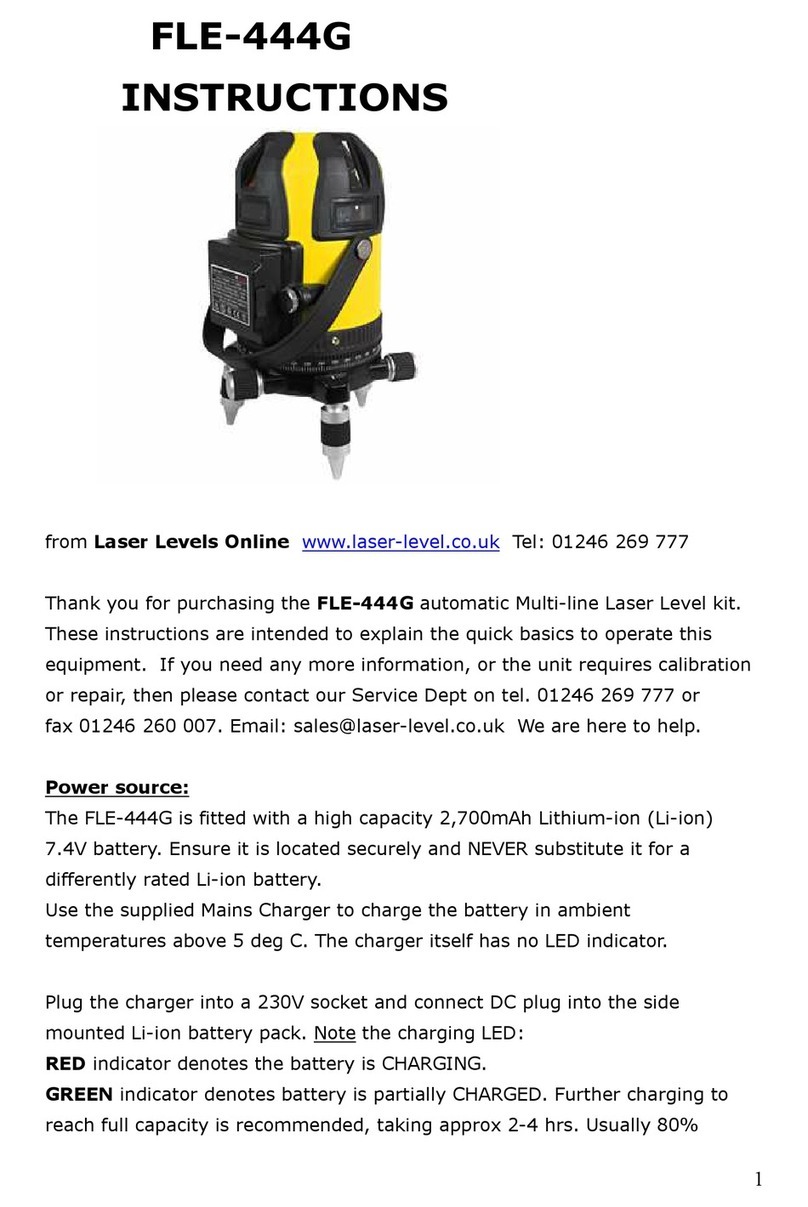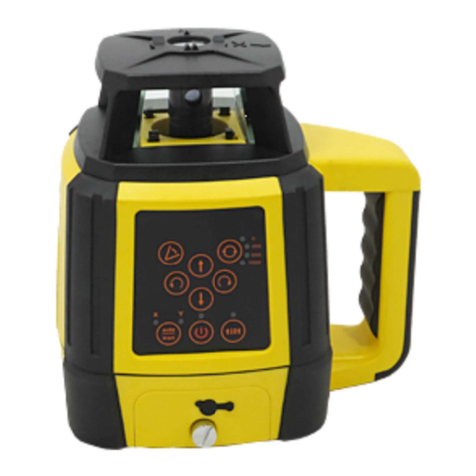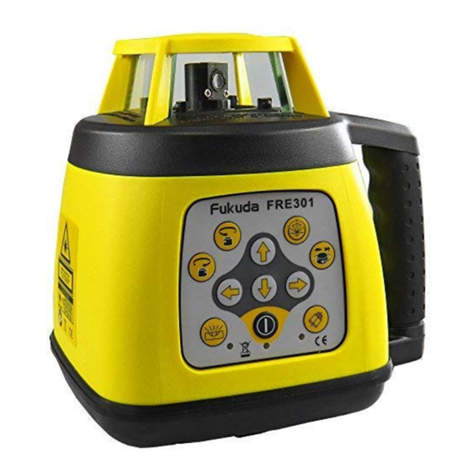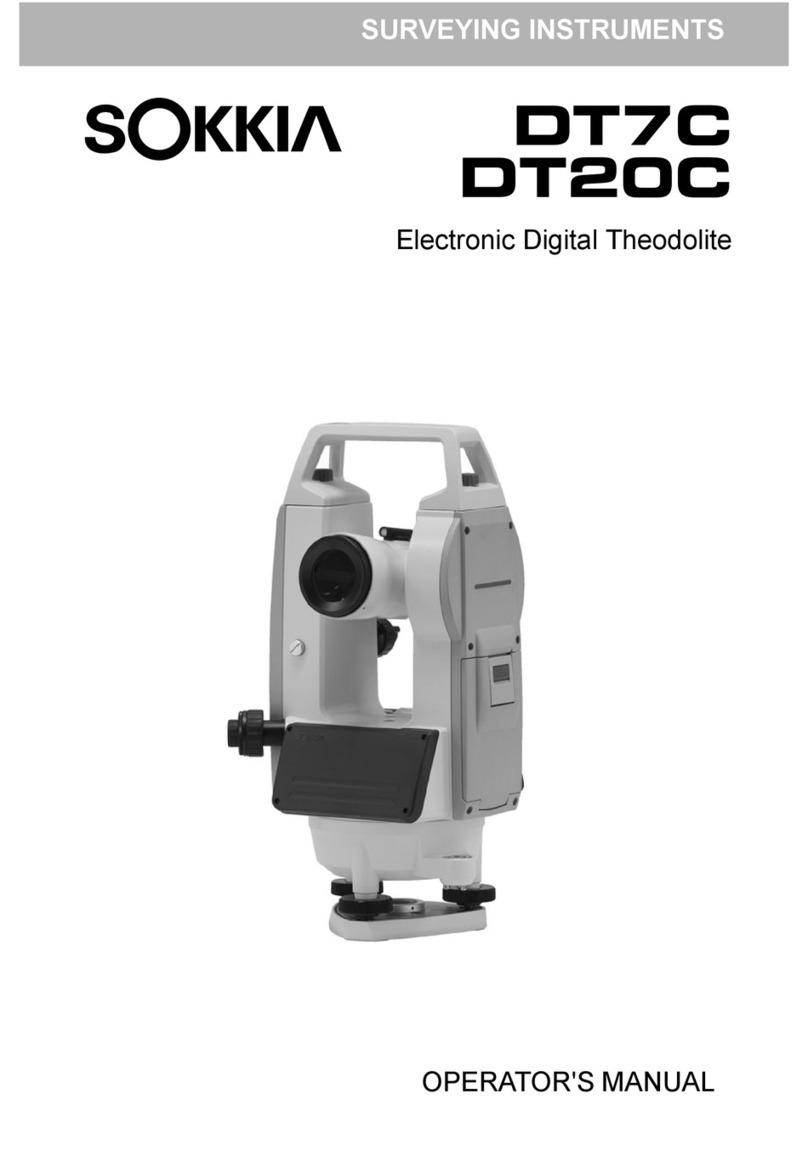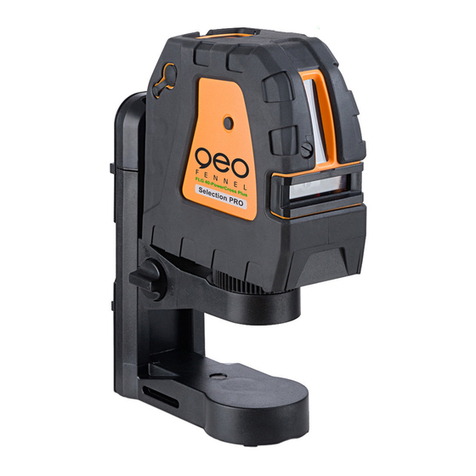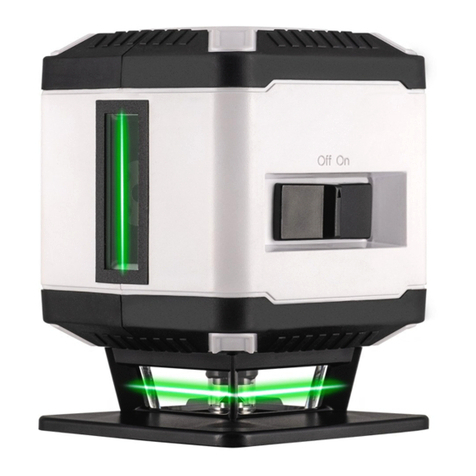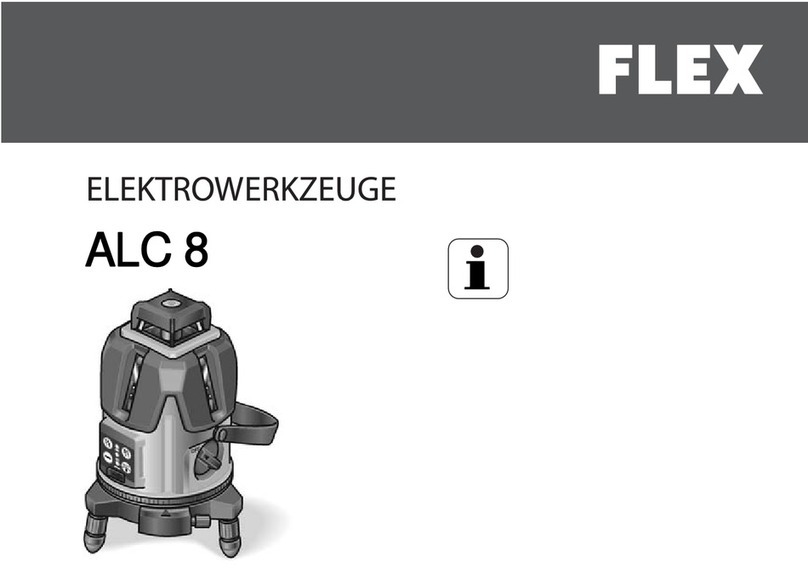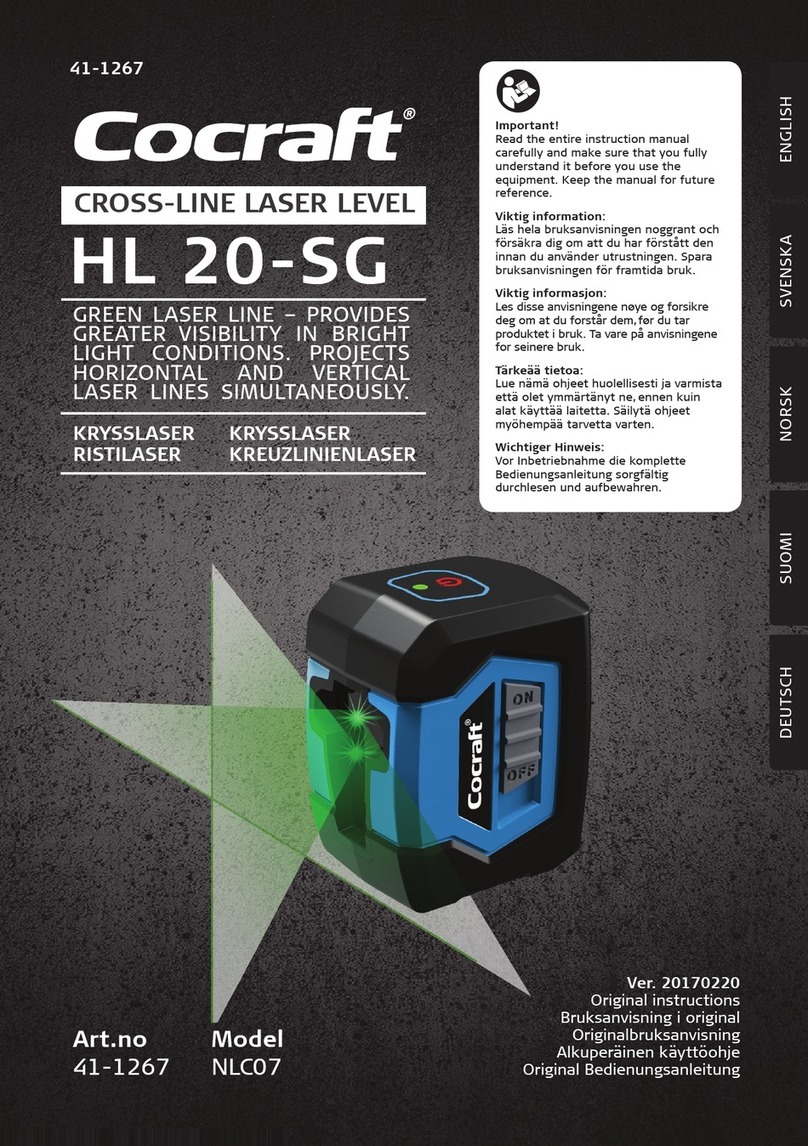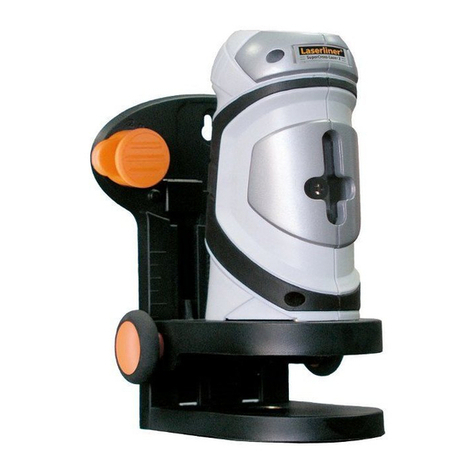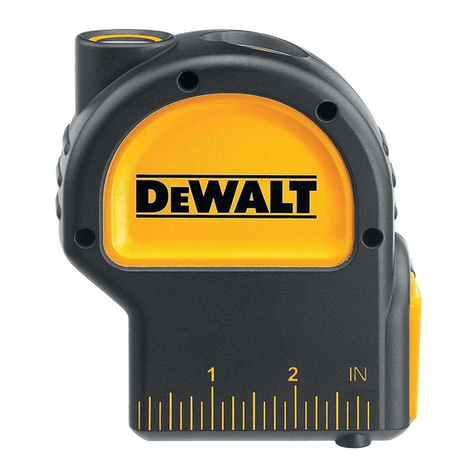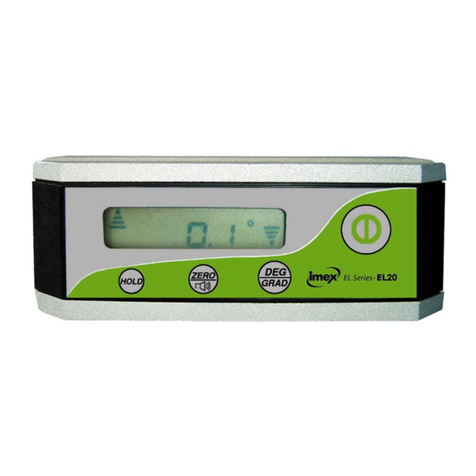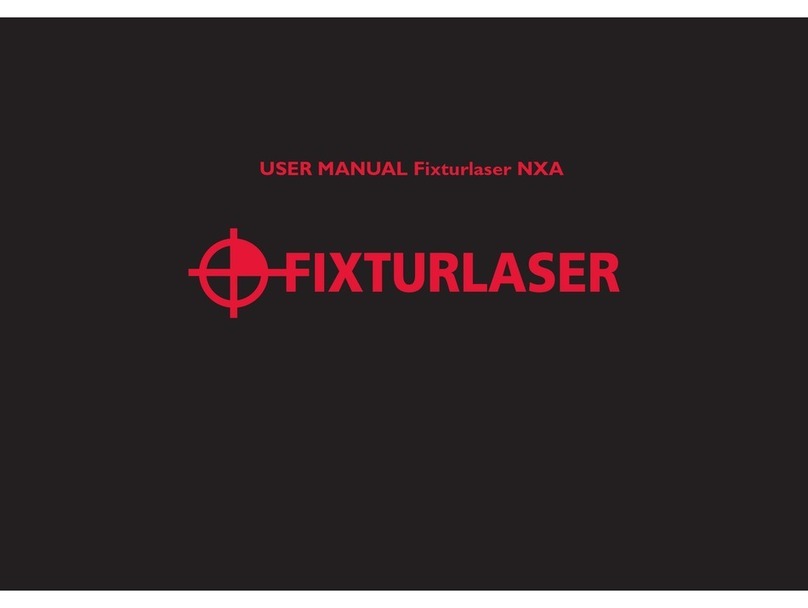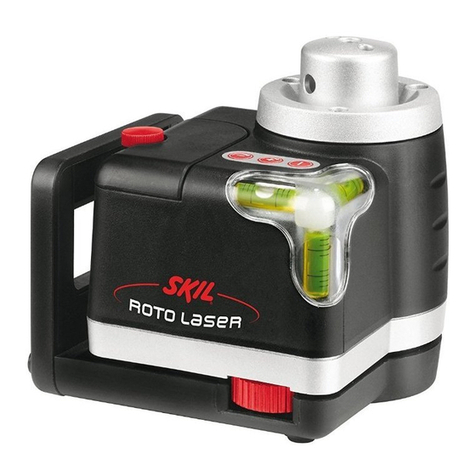
level position, usually by giving a continuous audible tone. By proportion 1m fall
over 40m is 250mm over 10m, so noting the set level dimension on the rear of the
staff, move the detector down by 250mm.
Using the remote control yourself (from the staff location) or a colleague at the laser,
switch the rotary laser to its MANUAL setting in the axis facing the measuring staff.
See the laser’s Instruction Manual – if the exact procedure is unknown.
Hold the “down arrow” button on the remote control or laser’s keypad, to slope the
laser beam down the measuring staff until it gives a continuous tone again, having
found set level on the detector. This has now set a 1:40 fall. Note, a Gradient
Conversion Chart to convert grade values into % fall is available on request.
Important note: All “grade facility” rotary lasers revert back to the auto (self) level
condition if switched Off without retaining the gradient set. So its recommended to
complete the ground-works before switching the laser Off.
However, a true grade laser level with LCD can be used to record this exact value.
If you are not sure whether your rotary is a “grade facility” laser or “true grade” laser,
then please ring our Technical Dept. on 08000 869 769 giving your model number, for
further advice.
Once this 1:40 fall is set, the User can use this inclined laser beam as a datum to set
the depth of either the crown of the drainage pipe or the Invert level, anywhere in
range of the laser – along that axis.
Invert level of a pipe – is the level taken from the bottom of the inside of the pipe.
Crown of a pipe – is the Invert level plus the internal diameter of the pipe plus the
pipe wall thickness. It may be necessary to use this in calculations when level
measurements are taken from the crown of a pipe.
Manhole / Access Chambers:
A manhole or access chamber is required to gain access to a drainage system for un-
blocking, cleaning, rodding or inspection. (Land drainage systems excluded). They
can be manufactured in PVC, masonry or precast concrete.
When setting appropriate drainage gradients it is important to allow for the depth
down to either the crown of the pipe (or the Invert level) from ground level, when
using manholes.

